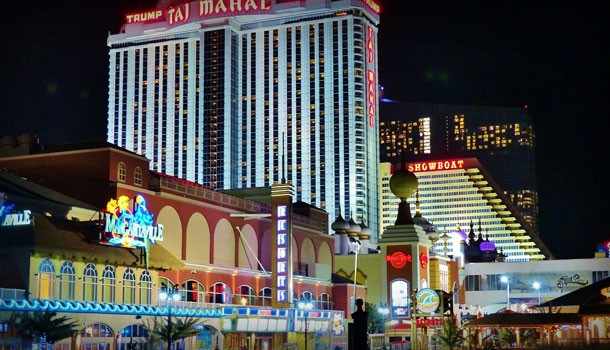
The Gregorian calendar may end on December 31st, but the poker calendar (the Gregorich Calendar?) ends in mid-July when the November Nine is announced and the poker world collectively takes a deep breath and finally slows down.
So what better time to take a look at the State of Poker than in the weeks following the conclusion of the World Series of Poker.
The State of Live Poker (cash games)
Sadly, there have been a number of poker room closings throughout the year (and on a grander scale, casino closures), and if you want to know what it’s like to sit in a live poker room just read my pseudo-trip-report from Foxwoods.
In Las Vegas, the M Resort, Riviera, El Cortez, Sunset Station, Palms and Circus Circus all closed their poker rooms, and in New Jersey the Revel closed their poker room.
Although there have also been several new / renovated rooms as well: Such as the WSOP branded room at Bally’s in Atlantic City, or Caesars new poker room in Las Vegas.
Frankly, live poker needs online poker to thrive, and until this country has something approaching interstate legalized online poker from Massachusetts to California (almost certainly with a blackout zone in Utah and a few other locales) live poker is going to continue to struggle to reclaim the popularity it had during the mid-2000’s and more poker rooms will continue to shut down in favor of banks of slot machines.
Don’t misunderstand me, live poker is doing much better than it was pre-Poker Boom, but there is no reason we cannot take it from merely surviving to thriving; where casinos WANT to open poker rooms once again. What that will take is the continued proliferation of online poker in the US.
The State of Live Poker (tournaments)
Tournament poker is in a state of flux at the moment, as tournament directors and poker tours try to determine the best course of action going forward that allows them to attract recreational players but at the same time appease their bread & butter customers, the grinders.
Over the past year we’ve seen a lot of tinkering with formats, structures, and buy-in levels as tournament organizers try to find the right balance.
Some of the ideas they will have to resolve are:
- Buy-in amounts for major Main Events – have we finally seen the end of the $10k Main Events outside of the WSOP and a few major events each year?
- Buy-in amounts for mid-stakes tournaments – Again, tournament organizers must decide between levels of $500 (WPT500 at ARIA), $1,000-$1,500 (the current standard), or perhaps something a bit heftier like $2,500.
- Super High Roller tournaments – Are these good or bad for the overall poker economy? Are they sustainable? Are we one scandal away from them becoming poker’s next black eye?
- Reentries, best stack, and other gimmicks – There have certainly been some hit or miss formats tested out, and while some like the interesting five starting flight WPT500 where the last flight is a turbo the morning of Day 2 have gone over well, others like the “combine your stacks from all starting days” have been met with more skepticism.
The real question now is, does tournament poker go back to being a loss-leader of sorts, or is there still profit to be found in what is a very competitive and very saturated market?
The State of Online Poker
Online poker hit a speed bump in 2014, but as disappointing as the failure of California and/or Pennsylvania to pass an online poker bill was, there was also a bright side, as Sheldon Adelson’s efforts to ban online gambling produced zero gains.
Online poker in the US is in a state of limbo.
New Jersey, Delaware, and Nevada have been plugging along, but recent downtrends have industry insiders scrambling for answers, particularly in a state like Delaware, where the online poker industry is verging on being a bust.
There is a white knight coming though, as Delaware and Nevada are expected to launch their interstate agreement in the coming weeks.
As it stands, the regulated online poker industry in the US cannot maintain the status quo. More states need to come online and more interstate agreements need to be signed. Once that happens the industry will have the opportunity to flourish.
The State of Poker Media
Poker media has changed a lot over the past year. The industry is no longer a quaint collection of poker enthusiasts writing about the game they love on a few poker-centric websites.
In 2014 the poker media grew to encompass mainstream publications and outlets and also grew in the scope of the coverage they provide. Editorials, legislative news, and even breaking news have become the norm in poker media, along with the usual player and tournament reporting and a new level of multimedia.
A year ago, if you had tried to sell me on the notion that the poker media industry would be where it is today, I would have laughed. But the onset of online poker in three states, and the rumblings in several others have made people who can write about poker, and can makes heads-or-tails of state laws, and such, hot commodities.
My feeling is poker media will continue to become more sophisticated and mainstream. After all, Boston.com and the New York Times won’t be able to ignore tens of millions of dollars in revenue.

